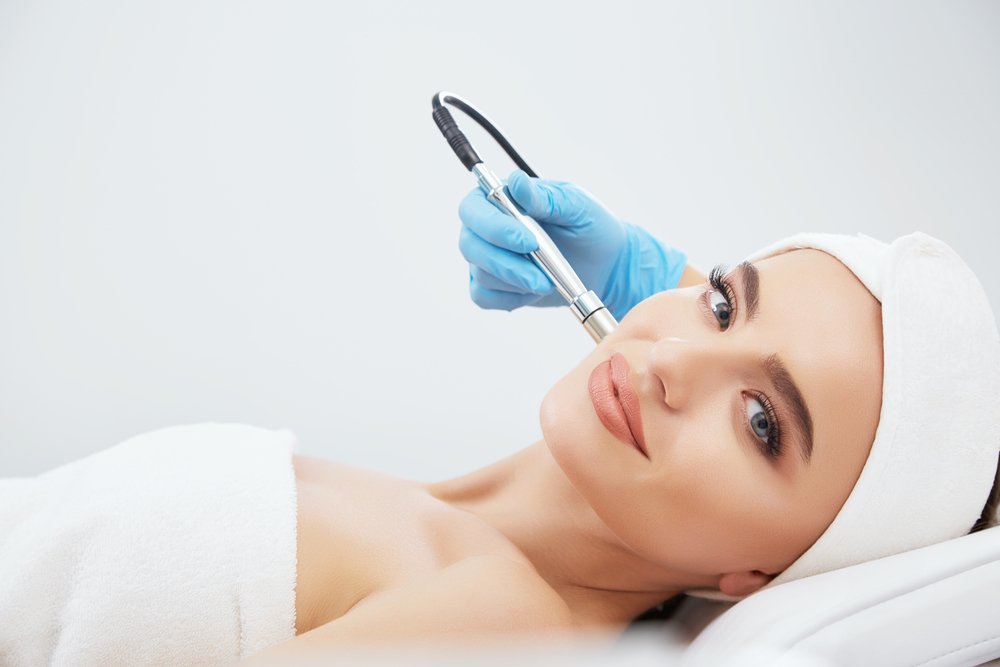 Many people are confused about the differences between chemical peel and microdermabrasion. It can feel like a complex maze. These two are common and popular skin care treatments for dull skin. While these two procedures may seem similar, they offer unique advantages and are tailored to address specific skin issues, including removing dead skin cells.
Many people are confused about the differences between chemical peel and microdermabrasion. It can feel like a complex maze. These two are common and popular skin care treatments for dull skin. While these two procedures may seem similar, they offer unique advantages and are tailored to address specific skin issues, including removing dead skin cells.
However, the subtle differences between them can leave many potential patients feeling uncertain about the most suitable treatment for their skin. This confusion underscores the significance of not only comprehending the distinctions between the two, but also selecting the appropriate skin rejuvenation treatment—a vital step towards achieving the radiant skin we all yearn for.
Dr. James K. Cardi M.D, an expert in medical aesthetics, will guide you through understanding the distinctions between these two options and assist you in making an informed choice based on your preferences.
What is Microdermabrasion?
Microdermabrasion is a non-invasive skin care treatment that effectively removes dead skin from the outer layer, resulting in improved fine lines, aging skin, and discoloration. This deep chemical exfoliation technique is performed by doctors using a vacuum, ensuring a pain-free and safe experience.
The treatment requires no downtime, allowing you to resume your regular activities immediately after. Microdermabrasion addresses various skin conditions, including acne, hyperpigmentation, dry skin, fine lines, uneven pigmentation, clogged pores, rosacea, minor scars, and skin texture problems.
Procedure
The microdermabrasion process begins with a thorough cleansing of the skin. The professional then guides the microdermabrasion equipment across your skin, meticulously exfoliating the targeted areas. The procedure typically lasts about 30 minutes for the face, and may take longer if additional areas are included.
Benefits
One of the primary benefits of microdermabrasion is its ability to stimulate collagen production, which improves the elasticity and texture of the skin, giving it a healthy glow. It also helps to reduce the appearance of age spots, acne scars, fine lines, and wrinkles, and can even minimize pore size. Furthermore, by removing the outer layer of dead skin cells, microdermabrasion allows skincare products to penetrate more deeply and work more effectively.
Risks and Side Effects
While microdermabrasion is generally safe for most skin types, some individuals may experience minor side effects such as redness, swelling, or a stinging sensation during or after the procedure. These effects typically subside within a few hours. More serious risks, although rare, could include bruising, skin sensitivity, and infection. Always ensure the procedure is performed by a qualified professional to minimize potential risks.
What is a Chemical Peel?
A chemical peel is a procedure that uses a solution of chemicals to remove damaged outer layers of skin and stimulate new skin cell growth. There are three depths of chemical peels:
- Light chemical peel: Light chemical peels treat fine wrinkles, acne, uneven skin tone, and dryness by removing the outer layer of skin (epidermis). Typically done every two to five weeks.
- Medium peel: This peel treats wrinkles, acne scars, and uneven skin tone by removing skin cells from the epidermis and parts of the upper dermis. Multiple procedures may be needed.
- Deep peel: The deep chemical peels are recommended for deeper wrinkles, scars, or precancerous growths, this peel removes skin cells even deeper. Achieves full effect without repeat procedures.
A chemical peel is a gentle yet powerful skin treatment that addresses various skin concerns. By offering a range of intensities, it can effectively treat conditions such as sun damage, age spots, acne scars, and fine lines. Experience the transformative effects of a chemical peel, revealing a radiant and glowing complexion.
Procedure
During a chemical peel procedure, a chemical solution is applied to the skin, causing it to blister and eventually peel off, revealing smoother, less wrinkled skin underneath. The procedure can take between 15 to 90 minutes depending on the depth of the peel.
Benefits
Chemical peels can dramatically improve the appearance of the skin. By causing the top layer of skin to peel off, the treatment stimulates the growth of fresh, new skin that is typically smoother and less wrinkled than the old skin. It can also help reduce the appearance of scars, sun damage, and hyperpigmentation.
Risks and Side Effect
Chemical peels, while usually safe when performed by a qualified professional, do come with potential risks and side effects. These include redness, irritation, and changes in skin color. In rare cases, chemical peels can cause scarring or infection. It's important to follow post-treatment skincare instructions carefully to minimize these risks.
Microdermabrasion vs Chemical Peel: Which is better?
Microdermabrasion treatment is recommended for minor skin imperfections, such as fine lines and clogged pores, and is suitable for all skin types, including dry skin. It provides immediate results, making the skin look fresher and brighter. However, multiple sessions may be required for more noticeable improvements.
On the other hand, chemical peel treatments using salicylic acid are often recommended for more serious skin concerns, such as deeper wrinkles and severe acne scars. They can result in dramatic improvements in skin tone, texture, and appearance, especially for individuals with uneven skin tone. However, they may not be suitable for individuals with sensitive skin, certain skin diseases, or dry skin.
The choice between microdermabrasion and chemical peels depends on the individual's specific skin type and concerns, including dry skin.
Revive your skin with Dr. James Cardi, a renowned expert in Rhode Island.
Discover the key to radiant complexion by scheduling a consultation with Dr. James Cardi today. Whether you're considering chemical peels and microdermabrasion his expertise will empower you to make an informed decision and achieve satisfying results.
Don't leave the fate of your skin to chance—seek the expertise of a professional. Your radiant, smoother skin is just a single appointment away.

